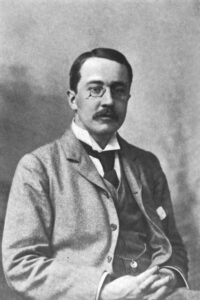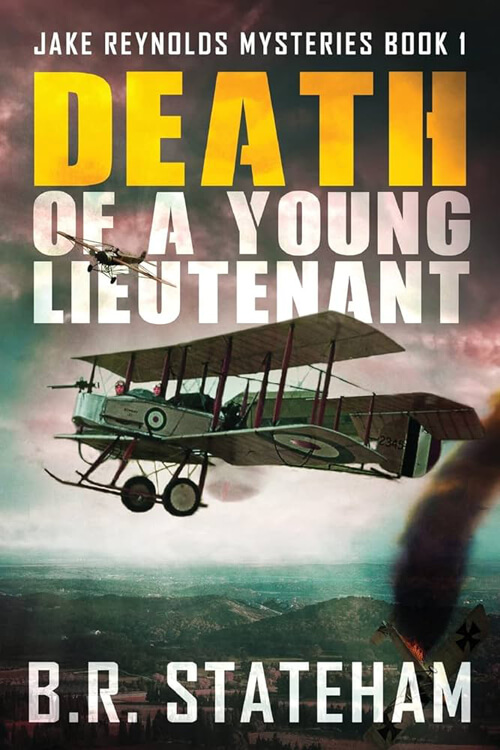
Dead Men Tell No Tales
In the brave old days of Ballarat and Bendigo, ship after ship went out black with passengers and deep with stores to bounce home with a bale or two of wool and hardly hands enough to reef topsails in a gale. Nor was this the worst, for not the crew only, but, in many cases, captain and officers would join in the stampede to the diggings, and we found Hobson’s Bay the congested asylum of all manner of masterless and deserted vessels. I vividly recall our skipper’s anger when the pilot informed him of this disgraceful fact. Within a fortnight, however, I met the excellent man face to face upon the diggings. It is fair to add that Lady Jermyn lost every officer and man in the same way and that the captain obeyed tradition to the extent of being the last to quit his ship. Nevertheless, of all who sailed by her in January, I alone was ready to return at the beginning of July.
I had been to Ballarat. I had given the thing a trial. For the most odious weeks, I had been a licensed digger on Black Hill Flats and failed to make running expenses. That, however, will surprise you the less when I pause to declare that I have paid as much as four shillings and sixpence for half a loaf of execrable bread; that my mate and I, between us, seldom took more than a few pennyweights of gold-dust in any one day; and never once struck pick into nugget, big or little, though we had the mortification of inspecting the “mammoth masses” of which we found the papers full on landing, and which had brought the gold-fever to its height during our very voyage. With me, however, as with many a young fellow who had turned his back on better things, the disorder was short-lived. We expected to make our fortunes out of hand, and we had reckoned without the vermin and the villainy which rendered us more than ever impatient of delay. I dreamt of London in my fly-blown blankets until I hankered after my chambers and club more than after much fine gold. Never shall I forget my first hot bath on returning to Melbourne; it cost five shillings, but it was worth five pounds and is my pleasantest reminiscence of Australia.
However, there was one slice of luck in store for me. I found the dear old Lady Jermyn on the very eve of sailing with a new captain, a new crew, a handful of passengers (chiefly steerage), and nominally no cargo at all. I felt nonetheless at home when I stepped over her familiar side.
In the cuddy we were only five, but a more uneven quintette I defy you to convene. There was a young fellow named Ready, packed out for his health and hurrying home to die among friends.
Read or download Book
E. W. Hornung
Ernest William Hornung (7 June 1866 – 22 March 1921) was an English author and poet known for writing the A—J—Raffles series of stories about a gentleman thief in late 19th-century London.
Biography.
Hornung was educated at Uppingham School; due to poor health, he left the school in December 1883 to travel to Sydney, where he stayed for two years. He drew on his Australian experiences as a background when he began writing, initially short stories and later novels.
In 1898, he wrote “In the Chains of Crime”, which introduced Raffles and his sidekick, Bunny Manders; the characters were based partly on his friend Oscar Wilde and his lover, Lord Alfred Douglas, and also on the characters of Sherlock Holmes and Dr Watson, created by his brother-in-law, Arthur Conan Doyle. The series of Raffles’ short stories were collected for sale in book form in 1899, and two further books of Raffles’s short stories followed, as well as a poorly received novel. Aside from his Raffles stories, Hornung was a prodigious fiction writer, publishing numerous books from 1890, A Bride from the Bush, and his 1914 novel The Crime Doctor.
The First World War brought an end to Hornung’s fictional output. His son, Oscar, was killed at the Second Battle of Ypres in July 1915. Hornung joined the YMCA, initially in England, then in France, where he helped run a canteen and library. He published two collections of poetry during the war and then, afterwards, one further volume of verse and an account of his time spent in France, Notes of a Camp-Follower on the Western Front. The stress of his war work further weakened Hornung’s fragile constitution. To aid his recovery, he and his wife visited the south of France in 1921. He fell ill from influenza on the journey and died on 22 March 1921, aged 54.
Although much of Hornung’s work has fallen into obscurity, his Raffles stories have continued to be popular and have formed numerous film and television adaptations. Hornung’s stories dealt with a broader range of themes than crime: he examined scientific and medical developments, guilt, class, and the unequal role played by women in society. Two threads that run through a sizeable proportion of his books are Australia and cricket; the latter was also a lifelong passion.
Hornung’s prose is widely admired for its lucid, simple style. In The Times, Oliver Edwards considered that “not the least attractive part of the Raffles books is the simple, plain, unaffected language in which each is written”. The obituarist in the same newspaper agrees and thinks Hornung had “a power of good and clear description and a talent for mystery and surprise”. Colin Watson also considers the point and observes that in Hornung’s writing, “superfluous description has been avoided and account of action is to the point”. At the same time, Doyle admired his “sudden use of the right adjective and the right phrase”, something the writer and journalist Jeremy Lewis sees as a “flamboyant, Kiplingesque taste for the vivid”.
Critics have observed that Hornung’s stories and novels are well-structured. George Orwell wrote that Hornung was “a very conscientious and on his level a very able writer. Anyone who cares for sheer efficiency must admire his work”. Watson states that Hornung’s “writing has pace. The stories, however ridiculous, carry the readers along briskly”. According to Cox, “Hornung’s work showed steady maturation” during his career, which Doyle also agreed with, although Edwards disagrees and thinks The Crime Doctor is one of Hornung’s weaker books.
Hornung’s approach to characters differed from other contemporary authors. Cox notes that Hornung “frequently chose to write from the perspective of the criminal”, and while many of Hornung’s novels contained criminal activity as a significant element of the plot, the Critic for Contemporary Authors states that the works do not “belong to the crime-fiction genre”. Hornung’s works included elements from more general fiction, “such as false identities, disguises, and disowned heiresses”.
Major themes
The academic Nick Rance identifies three categories of Raffles’s stories: “The Rise of the New Woman”, in which Raffles either escapes from romantic entanglements or uses the infatuations of a woman to achieve his aims; “The Rise of the Plutocracy”, in which Raffles steals from the nouveau riche as much as the upper classes; and those stories that seek “to reaffirm or re-establish a sense of middle-class identity”. The last category is based on Raffles not being a member of “Society”, only being accepted because of his cricketing ability and associated fame. From this point, Raffles’s stealing from the rich is a “rearguard action on behalf of the Puritan values”, which was perceived as making up middle-class values. However, Rance also states that those values are obscured by changing class boundaries. Gariepy makes the same point and considers that “Raffles’s daring exploits and fantastic adventures symbolized the growing rebellion against Victorian sensibility at the turn of the century”.






